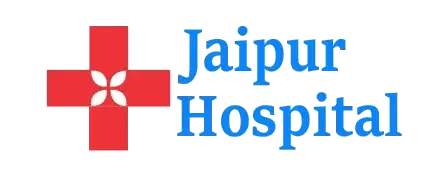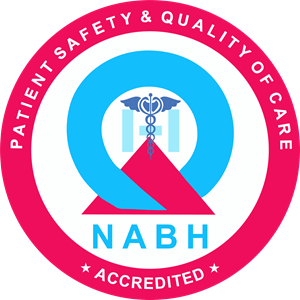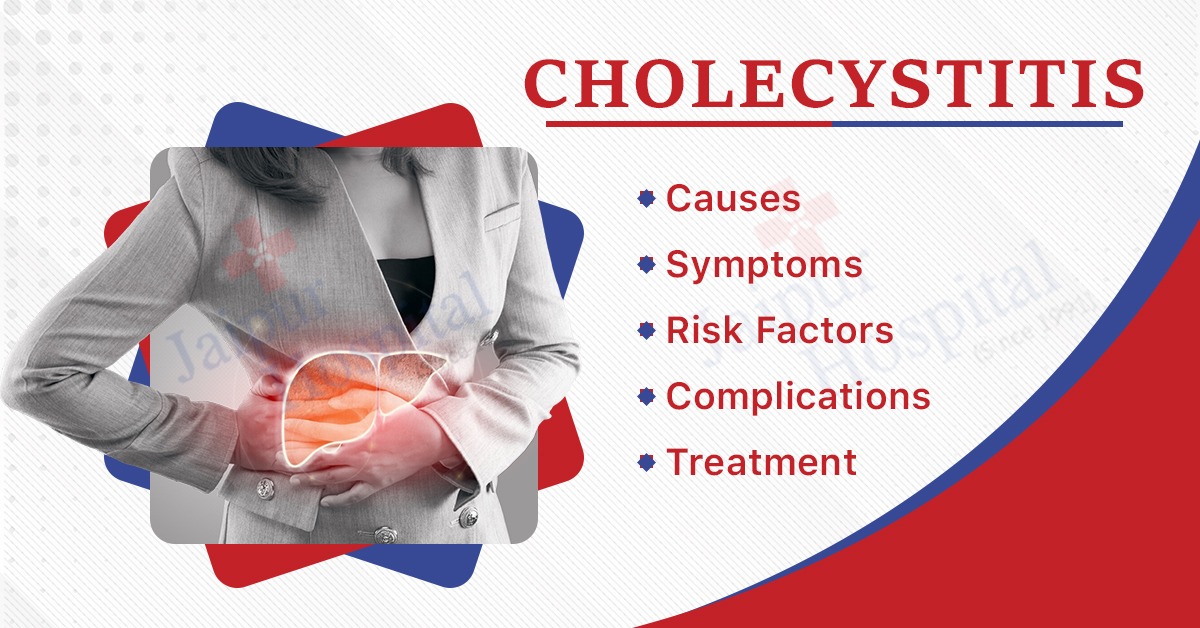What is Cholecystitis?
Cholecystitis is a medical condition characterized by gallbladder inflammation, a small organ situated beneath the liver. This condition typically arises due to the obstruction of the cystic duct, often caused by gallstones. As bile, the digestive fluid produced by the liver becomes trapped in the gallbladder, irritation, inflammation, and potential infection ensue. The onset of cholecystitis can lead to severe abdominal pain, nausea, vomiting, and fever. Left untreated, it can result in complications such as gallbladder rupture or infection. This discussion will delve into the causes, symptoms, diagnosis, treatment options, and potential complications associated with cholecystitis, offering a comprehensive understanding of this prevalent gastrointestinal disorder.
Symptoms of Cholecystitis:
Cholecystitis can present with various symptoms, which may include:
- Severe Abdominal Pain: Typically located in the upper right or center of the abdomen, this pain can be sharp, constant, or cramp-like. It may also radiate to the right shoulder or back.
- Nausea and Vomiting: Many individuals with cholecystitis experience nausea and may vomit, especially after consuming fatty or greasy foods.
- Fever and Chills: Inflammation of the gallbladder can lead to fever and chills, indicating an immune response to infection or inflammation.
- Tenderness: The abdomen may be tender to the touch, especially in the area over the gallbladder (right upper quadrant of the abdomen).
- Indigestion: Some people may experience indigestion, bloating, or discomfort after eating, particularly after consuming high-fat or greasy foods.
- Jaundice: In severe cases or if there’s a blockage in the common bile duct, jaundice may occur, characterized by yellowing of the skin and whites of the eyes.
Also read: Gonorrhea: Symptoms, Causes, Diagnosis, and Treatment
Causes of Cholecystitis:
Cholecystitis can be caused by various factors, but the primary underlying cause is typically an obstruction of the cystic duct, which leads to inflammation and irritation of the gallbladder. The common causes of cholecystitis include:
- Gallstones: The most common cause of cholecystitis is the presence of gallstones, which are solid particles formed from bile components. Gallstones can obstruct the cystic duct, preventing bile from flowing out of the gallbladder and leading to inflammation.
- Biliary Sludge: This is a mixture of bile components that can accumulate in the gallbladder and obstruct the cystic duct, similar to gallstones. Biliary sludge can develop due to factors such as rapid weight loss, pregnancy, certain medications, or certain medical conditions.
- Tumors: Tumors in the gallbladder or bile ducts can obstruct the flow of bile and lead to cholecystitis. These tumors may be benign (non-cancerous) or malignant (cancerous).
- Infection: In some cases, cholecystitis can occur due to infection of the gallbladder, often as a complication of untreated gallstones or other underlying medical conditions. Bacterial infections can lead to inflammation and irritation of the gallbladder.
- Ischemia: Reduced blood flow to the gallbladder, often due to conditions such as atherosclerosis or vasculitis, can cause ischemic cholecystitis. This occurs when the gallbladder does not receive an adequate blood supply, leading to tissue damage and inflammation.
- Trauma: Injury to the abdomen, such as from a car accident or a severe blow to the abdomen, can cause cholecystitis by damaging the gallbladder or causing bile leakage.
- Certain Medical Conditions: Conditions such as diabetes, liver cirrhosis, and certain infections can increase the risk of developing cholecystitis.
Diagnosis of Cholecystitis:
The diagnosis of cholecystitis typically involves a combination of medical history, physical examination, and diagnostic tests. Here are the common methods used for diagnosing cholecystitis:
- Medical History and Physical Examination: The healthcare provider will ask about the patient’s symptoms, including the location and severity of abdominal pain, as well as any associated symptoms such as nausea, vomiting, fever, or jaundice. A physical examination may reveal tenderness in the right upper quadrant of the abdomen.
- Blood Tests: Blood tests may be conducted to check for signs of inflammation or infection, such as elevated white blood cell count (indicating infection), elevated C-reactive protein (CRP), and elevated liver enzymes (indicating liver or gallbladder dysfunction).
- Imaging Studies:
- Ultrasound: Ultrasound imaging is often the initial imaging test used to diagnose cholecystitis. It can detect gallstones, thickening of the gallbladder wall, and signs of inflammation or infection.
- CT Scan: A computed tomography (CT) scan may be performed if ultrasound results are inconclusive or if complications such as perforation or abscess formation are suspected.
- HIDA Scan: A hepatobiliary iminodiacetic acid (HIDA) scan may be used to assess the function of the gallbladder and detect obstruction of the cystic duct.
- Other Tests:
- Cholecystography: This involves injecting a contrast dye into the bloodstream to visualize the gallbladder and bile ducts on X-ray images.
- Endoscopic Retrograde Cholangiopancreatography (ERCP): ERCP may be performed to visualize and evaluate the bile ducts, particularly if there is suspicion of bile duct stones or other abnormalities.
- Diagnostic Criteria: In addition to imaging findings, certain diagnostic criteria, such as the Tokyo Guidelines, may be used to aid in the diagnosis of acute cholecystitis, particularly in cases where imaging results are inconclusive.
Also read: Uterine Fibroids – Types, Symptoms Causes, Risk Factors, Treatment
Risk Factors of Cholecystitis:
Several risk factors can increase the likelihood of developing cholecystitis. These include:
- Gallstones: Individuals with gallstones have a significantly higher risk of developing cholecystitis. Gallstones can block the cystic duct, leading to inflammation and irritation of the gallbladder.
- Age and Gender: Cholecystitis is more common in individuals over the age of 40, particularly women. Women are more likely to develop gallstones due to hormonal factors, such as estrogen, which can increase cholesterol levels in bile and promote the formation of gallstones.
- Obesity: Being overweight or obese is a significant risk factor for gallstones and, consequently, cholecystitis. Excess body weight can lead to changes in cholesterol metabolism and increase the risk of gallstone formation.
- Rapid Weight Loss: Crash diets or rapid weight loss methods can increase the risk of developing gallstones and cholecystitis. When the body rapidly breaks down fat tissue, it releases cholesterol into the bile, which can contribute to the formation of gallstones.
- Diet: A diet high in fat and cholesterol and low in fiber may increase the risk of gallstone formation and cholecystitis. Consuming excessive amounts of fatty or fried foods can contribute to the development of gallstones.
- Family History: A family history of gallstones or cholecystitis increases the risk of developing these conditions. Genetic factors may play a role in determining susceptibility to gallstone formation.
- Certain Medical Conditions: Several medical conditions are associated with an increased risk of cholecystitis, including:
- Diabetes
- Liver diseases, such as cirrhosis
- Crohn’s disease or other inflammatory bowel diseases
- Sickle cell disease
- Metabolic syndrome
- Medications: Certain medications, such as hormone replacement therapy or cholesterol-lowering drugs, may increase the risk of gallstone formation and cholecystitis.
- Pregnancy: Pregnancy increases the risk of gallstone formation due to hormonal changes and decreased gallbladder motility. Cholecystitis during pregnancy can pose risks to both the mother and the fetus and may require medical intervention.
Treatments of Cholecystitis:
The treatment of cholecystitis depends on the severity of the condition and whether complications are present. Common treatment approaches include:
- Pain Management: Pain relief is often provided to manage the discomfort associated with cholecystitis. Nonsteroidal anti-inflammatory drugs (NSAIDs) such as ibuprofen may be used to alleviate pain and reduce inflammation.
- Antibiotics: If cholecystitis is caused by an infection, antibiotics are typically prescribed to treat the underlying bacterial infection. The choice of antibiotic depends on the suspected or identified pathogens and the severity of the infection.
- NPO Status: In severe cases of cholecystitis, patients may be advised to refrain from eating or drinking (NPO status) to allow the gallbladder to rest and reduce the stimulation of gallbladder contraction.
- Fluids and Electrolytes: Intravenous (IV) fluids may be administered to maintain hydration and electrolyte balance, especially if the patient is unable to eat or drink orally due to nausea, vomiting, or NPO status.
- Gallbladder Drainage: In some cases, gallbladder drainage may be necessary to relieve pressure and reduce inflammation. This can be achieved through percutaneous drainage, where a thin tube is inserted through the skin directly into the gallbladder to drain accumulated fluid.
- Surgery (Cholecystectomy):
- Laparoscopic Cholecystectomy: This is the most common treatment for cholecystitis. It involves the surgical removal of the gallbladder using minimally invasive techniques, typically through small incisions in the abdomen.
- Open Cholecystectomy: In certain cases where laparoscopic surgery is not feasible or complications arise, open cholecystectomy may be performed. This involves making a larger incision in the abdomen to remove the gallbladder.
- Emergency Surgery: In cases of severe cholecystitis with complications such as gangrene, perforation, or abscess formation, emergency surgery may be necessary to remove the infected gallbladder.
- Endoscopic Procedures: In some cases, endoscopic procedures such as endoscopic retrograde cholangiopancreatography (ERCP) may be used to remove gallstones or relieve bile duct obstruction.
- Percutaneous Cholecystostomy: This procedure involves the insertion of a tube through the skin and into the gallbladder to drain bile in cases where surgery is not an immediate option or is contraindicated.
Complications of Cholecystitis:
Cholecystitis, if left untreated or inadequately managed, can lead to several complications, some of which can be serious and life-threatening. These complications may include:
- Gangrenous Cholecystitis: Gangrenous cholecystitis occurs when the inflammation and reduced blood flow to the gallbladder lead to tissue death (gangrene). This can result in perforation (rupture) of the gallbladder, allowing bile and bacteria to leak into the abdominal cavity, leading to a severe infection called peritonitis.
- Empyema of the Gallbladder: In severe cases of cholecystitis, pus may accumulate within the gallbladder, leading to empyema (a collection of infected fluid). This can further increase the risk of systemic infection and sepsis.
- Perforation: Persistent inflammation and pressure within the gallbladder can cause it to rupture or perforate. Gallbladder perforation can lead to the leakage of bile and digestive enzymes into the abdominal cavity, resulting in peritonitis, a potentially life-threatening condition requiring emergency medical attention.
- Biliary Obstruction: In some cases, cholecystitis can lead to obstruction of the bile ducts due to swelling, inflammation, or the presence of gallstones. Biliary obstruction can result in jaundice, with symptoms such as yellowing of the skin and eyes, dark urine, and pale stools.
- Abscess Formation: Infection within the gallbladder or surrounding tissues can lead to the formation of abscesses. These pockets of pus may require drainage and antibiotic treatment to resolve.
- Chronic Cholecystitis: Some individuals may develop chronic cholecystitis, characterized by recurrent episodes of inflammation and abdominal pain. Chronic cholecystitis can significantly impact the quality of life and may eventually require surgical removal of the gallbladder (cholecystectomy).
- Mirizzi Syndrome: This rare complication occurs when a gallstone becomes impacted in the cystic duct or neck of the gallbladder, leading to compression or obstruction of the common bile duct. Mirizzi syndrome can result in jaundice, biliary obstruction, and potentially severe complications requiring surgical intervention.
- Sepsis: In severe cases of cholecystitis, particularly those complicated by perforation or abscess formation, bacteria may enter the bloodstream, leading to sepsis—a life-threatening systemic infection that can cause organ failure and shock if not promptly treated.
Prevention of Cholecystitis:
While some risk factors for cholecystitis, such as age and genetics, cannot be modified, certain lifestyle changes and preventive measures may help reduce the risk of developing this condition. Here are some strategies for preventing cholecystitis:
- Maintain a Healthy Weight: Obesity is a significant risk factor for gallstone formation and cholecystitis. Aim to achieve and maintain a healthy weight through a balanced diet and regular physical activity. Avoid crash diets or rapid weight loss, as these can increase the risk of gallstones.
- Eat a Healthy Diet: Consume a diet rich in fruits, vegetables, whole grains, and lean protein, and low in saturated fats, refined sugars, and processed foods. Limit your intake of high-fat and high-cholesterol foods, as these can contribute to gallstone formation.
- Stay Hydrated: Drink an adequate amount of water each day to help maintain proper hydration and bile flow. Dehydration can increase the risk of gallstone formation.
- Gradual Weight Loss: If you need to lose weight, aim for slow and gradual weight loss of no more than 1-2 pounds per week. Rapid weight loss can increase the risk of gallstone formation.
- Exercise Regularly: Engage in regular physical activity, such as brisk walking, swimming, cycling, or strength training, to help maintain a healthy weight and promote overall health. Aim for at least 30 minutes of moderate-intensity exercise most days of the week.
- Manage Chronic Conditions: If you have conditions such as diabetes, liver disease, or metabolic syndrome, work with your healthcare provider to manage these conditions effectively. Proper management of underlying health conditions can help reduce the risk of complications such as gallstones and cholecystitis.
- Limit Alcohol Consumption: Excessive alcohol consumption can increase the risk of gallstone formation. If you choose to drink alcohol, do so in moderation, which means up to one drink per day for women and up to two drinks per day for men.
- Quit Smoking: Smoking is associated with an increased risk of gallstone formation and cholecystitis. If you smoke, consider quitting, and seek support and resources to help you quit successfully.


